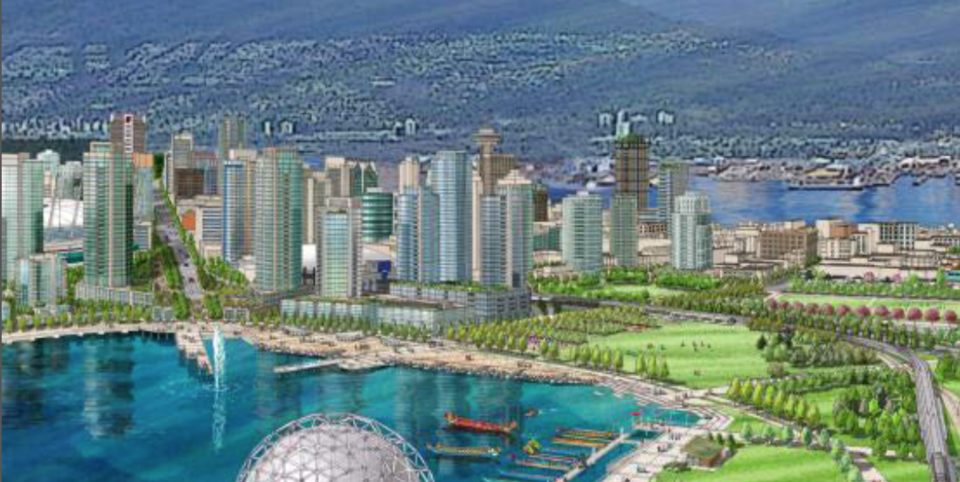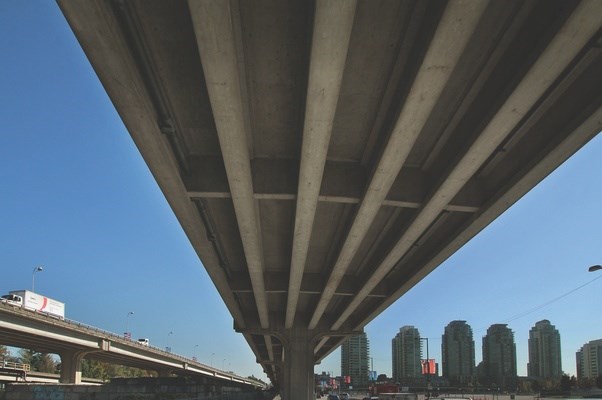The cost of demolishing the Dunsmuir and Georgia Street viaducts has jumped to $200 million from $130 million, but after two years of studying the plan, Vancouver city planners are more confident than ever that removal is the best option.
“We’ve never studied anything so much,” said Lon LaClaire, manager of strategic transportation planning at the City of Vancouver. “This is the biggest thing we’ve ever done, so the level of due diligence is really high.”
He said one of the most compelling reasons to remove the viaducts is that the structures are more vulnerable to an earthquake than first thought. Engineering studies found that if even a moderate earthquake hit today, the viaducts could topple, potentially falling on the SkyTrain line and the roadway that runs under them (Pacific and Expo boulevards). It would cost between $60 million and $65 million just to ensure the viaducts don’t collapse during an earthquake.
LaClaire said the project’s cost has increased from $130 million two years ago to $200 million today in part because of inflation. But the city expects development fees to easily cover that cost.
TransLink might fund a portion of the cost of rerouting and redesigning Pacific Boulevard because it’s part of a regional system of important arterial roads TransLink has responsibility for.
At a cost of $10 million, city planners have added a cycling and pedestrian bridge that would connect Dunsmuir Street to a new park. Work is also continuing on diverting heavy traffic from Prior Street to either Malkin or National in response to Strathcona residents’ concerns about safety and noise.

Iain Black, president and CEO of the Vancouver Board of Trade, said the project has a lot of potential. But he remains skeptical that it won’t increase congestion on other roads, especially after the failure earlier this year of the plebiscite on a proposed 0.5 per cent regional sales tax to fund increased transit services.
Traffic volumes into Vancouver’s downtown have been falling over the past 20 years, and, even with the transit funding gridlock, LaClaire said the city still expects the Evergreen Line and a new B-Line on Hastings Street to continue the trend of fewer cars on downtown streets.
The viaducts currently handle fewer vehicles than they were designed for: 750 vehicles per lane, per hour, at their busiest, compared with the 1,800 per hour the viaducts can handle.
The decision to move St. Paul’s Hospital to False Creek is one factor the planners have not studied yet, LaClaire said, although they have taken into account the transition of False Creek Flats to more office use as the area is redeveloped.
Retired transportation director Ian Adams recently told BIV’s sister paper, the Vancouver Courier, that, based on his calculations, the viaducts’ removal would result in “rush-hour conditions for six to eight hours a day” along the redesigned Pacific Boulevard.
But LaClaire said that all of the work the city has done so far shows the downtown road network can handle the removal of the viaducts. Travel time will increase by one to three minutes, however, because the viaducts will be replaced with a road that has three intersections with traffic lights.
Traffic is an important issue for downtown businesses because surveys have shown customers will avoid travelling downtown if there is too much congestion, said Charles Gauthier, president and CEO of the Downtown Vancouver Business Improvement Association (DVBIA). But he said DVBIA members would likely support the plan because of the assurances they heard from city staff this summer.
“The viaducts only carry about 15 per cent of the traffic coming in and out of the downtown,” Gauthier said. “[City staff] showed how traffic volumes are using the other streets. … It kind of puts it into perspective. The viaducts are part of the major road network, but they’re not the only ones into and out of downtown.
jstdenis@biv.com
@jenstden



